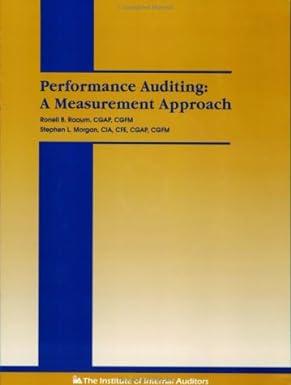Question
You have just been hired to work for a company that sells shoes. Your first task is to prepare a master budget for the next
You have just been hired to work for a company that sells shoes. Your first task is to prepare a master budget for the next three months, starting April 1.
The shoes are sold to retaliers for $16 each. Recent and forecasted sales in units are as follows:
Janurary (actual) 22,400
February (actual) 28,400
March (actual) 42,400
April (Budget) 67,400
May (budget) 102,400
June (budget) 52,400
July (budget) 32,400
August (budget) 30,400
September (budget) 27,400
| The large buildup in sales before and during June is due to Father's Day. Ending inventories are supposed to equal 40% of the next month's sales in units. The shoes cost the company $5.20 each. | ||||||||||||||||
| Purchases are paid for as follows: 50% in the month of purchase and the remaining 50% in the following month. All sales are on credit, with no discount, and payable within 15 days. The company has found, however, that only 20% of a month's sales are collected by month-end. An additional 70% is collected in the following month, and the remaining 10% is collected in the second month following sale. Bad debts have been negligible. | ||||||||||||||||
| The company's monthly selling and administrative expenses are given below: Variable -Sales commisions 4% of sales
Fixed -advertising $320,000 -rent $30,000 -salaries $130,000 -utilities $13,000 -insurances $4,200 -depreciations $26,000
|
Step by Step Solution
There are 3 Steps involved in it
Step: 1

Get Instant Access to Expert-Tailored Solutions
See step-by-step solutions with expert insights and AI powered tools for academic success
Step: 2

Step: 3

Ace Your Homework with AI
Get the answers you need in no time with our AI-driven, step-by-step assistance
Get Started


